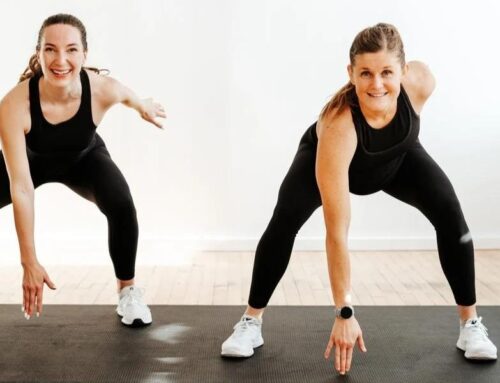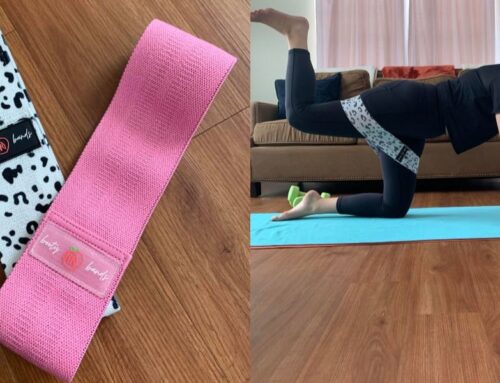
The pandemic has forced many of us to rethink our approach to fitness. With gyms closed and outdoor activities restricted, the idea of working out at home has become more appealing than ever. Creating a home gym not only allows for a more convenient and flexible fitness routine, but also provides a sense of privacy and control over one’s workout environment.
But where to start? Building a home gym can be daunting, especially if you’re not sure what equipment to invest in or how to optimize your space.
In this article, we’ll break down the process of creating a home gym into seven easy-to-follow steps. From setting goals and assessing space to selecting equipment and designing a workout plan, we’ll guide you through every aspect of creating your own personal fitness oasis. Whether you’re a seasoned fitness enthusiast or just starting out, these tips will help you create a home gym that fits your needs, budget, and lifestyle.
Benefits of Crating Your Own Home Gym
Creating your own home gym can be a great investment in your health and fitness. Here are some benefits of having a home gym:
- Convenience: One of the biggest advantages of having a home gym is the convenience factor. You don’t have to worry about commuting to a gym, waiting for equipment, or adjusting your schedule to fit in a workout. With a home gym, you can exercise whenever you want, for as long as you want, without leaving the comfort of your own home.
- Cost-effective: A home gym can also be a cost-effective option in the long run. While the initial investment may be higher than a gym membership, you’ll save money over time by not having to pay monthly fees. Plus, you can purchase equipment gradually over time, rather than all at once.
- Personalization: When you create your own home gym, you have the ability to personalize it to your own preferences. You can choose the equipment that best suits your fitness goals and preferences, and you don’t have to worry about sharing equipment with others. You can also play your own music, control the temperature, and create a workout environment that is tailored to your needs.
- Privacy: Some people may feel self-conscious or uncomfortable working out in front of others. With a home gym, you have complete privacy and can exercise in peace without worrying about other people watching you.
- 24/7 access: A home gym is open 24/7, which means you can work out whenever you want. Whether you’re an early riser or a night owl, you can exercise at any time that is convenient for you.
How to create your home gym?
Here’s how to create your home gym in 7 steps:

Step 1: Choose a space
The first step to building the perfect gym is to find the best space in your home. For those in larger homes, you may have plenty of options, including a bonus room or basement apartment. Those in smaller homes, such as an apartment or condo, may need to get creative. If you don’t have an extra room, try using your garage or placing a partition in one of your rooms.
Keep in mind that the space will need to have room for your equipment and storage. Good air ventilation is also important. If your gym is located in your garage, you’ll need to either open the garage door when exercising and/or install a window unit or separate fan.
Step 2: Decide on equipment
When setting up a home gym, choosing the right equipment is crucial to achieving your fitness goals. While gym equipment can be expensive, it’s important to invest in the right items to ensure that you have a workout space that is functional and effective
When selecting equipment, it’s important to consider what you’ll be using it for. For cardio, one or two larger pieces of equipment such as a treadmill, exercise bike, rower, or elliptical are great options. These machines can provide an excellent cardio workout that can help you burn calories and improve your cardiovascular health.
If weightlifting is going to be a part of your routine, you’ll want to consider an all-in-one home gym setup. These setups usually include a seat or adjustable bench, weightlifting bar, and barbells. This type of equipment will allow you to perform a wide variety of strength-training exercises, such as bench presses, squats, and deadlifts, all in the comfort of your own home.
In addition to the larger equipment pieces, there are also a variety of smaller accessories that can be useful in a home gym. Yoga mats and blocks can be used for stretching and yoga, while free weights and kettlebells are great for strength training. Resistance bands and tubes are also useful for strength training and can be used for a variety of exercises.
Other accessories to consider include ankle weights, pull-up bars, sliders, medicine balls, stability balls, Bosu balls, and punching bags with gloves. These items can add variety to your workout and help you target different muscle groups. A jump rope and step with pallets can also be useful for cardio and lower body workouts, while a plyometric box can be used for explosive exercises like box jumps.
Step 3: Design the gym
Once you’ve decided the gym’s location and equipment needs, measure the space, including the length, width and height. Make sure that the equipment you want (especially the larger items) fit the space appropriately. If you don’t have room for everything you want, you may need to get creative about storage options and/or finding home gyms with multiple set-ups.
Decide where you want everything to go before purchasing expensive equipment. That way, you don’t waste money on unnecessary items.
Step 4: Add necessary technology
Planning to watch workout classes on the TV? If you plan to watch instruction and workout videos, you’ll need to add a large television to your home gym. You may also want to consider adding speakers to listen to your favorite jams while working out.
Make sure the gym space in your home is equipped with the necessary technology to make this happen. You may need electrical outlets, cables, wifi, extension cords and a power strip.
Step 5: Invest in good storage
When building a home gym, it’s important to prioritize storage. Depending on where your gym is located, you may need to install shelving and wall racks to ensure that all of your equipment has a designated space. Items such as free weights, dumbbells, yoga mats, and resistance bands all need to be stored properly to avoid cluttering the floor and impeding your workout.
To make the most of your space, consider investing in storage items like wall-mounted yoga mat racks, dumbbell tree racks, and two-tier free weights racks. These can help keep your equipment organized and easily accessible during your workout. A laundry hamper can also be a helpful addition to keep dirty clothing contained, while a locker cabinet can provide secure storage for any valuables.
If you have limited space in your home gym, you may want to consider purchasing easy-to-store exercise equipment. Foldable treadmills and space-saving machines are great options as they can be easily stored away when not in use. Additionally, a storage bench can provide a dual purpose of storing equipment while also providing a surface for exercises like step-ups and box jumps.
Wire shelving and bins and baskets are also versatile storage options that can be used to organize smaller items such as resistance bands and gym accessories. With proper storage in place, your home gym can be a clutter-free and effective space for achieving your fitness goals.
Step 6: Install a floor length mirror and rubber flooring
Large mirrors are key when it comes to working out. Not only can exercising in the mirror give you a focal point and help perfect your form, it can also help with spatial awareness and motivation. Most commercial gyms have large mirrors located throughout the space so that clients can observe their workouts.
If your home gym is large, we recommend adding wall mounted mirror tiles or a floor length mirror that fits your aesthetic. Don’t forget about your floors either! Not only is working out on a hard surface bad for your back and joints, but it’s also bad for the floor itself.
To protect your floor and your body, we recommend installing rubber flooring. One easy way to do this is to use interlocking rubber tiles, which can be installed and removed easily.
Step 7: Add your own personal touches
To make your home gym a more personalized and motivating space, consider adding your own flair to the room. This can include anything from bumper stickers and posters to photos and inspirational quotes. The key is to find what resonates with you and helps keep you motivated during your workout.
One great way to add a practical element to your gym is by installing a whiteboard on the wall. This can be used to record your workouts, track progress, and set goals. Having a visual representation of your fitness journey can help you stay focused and accountable to your goals. You can even personalize your whiteboard with a workout plan tailored specifically to your needs and preferences.
In addition to practical elements, adding motivational decor to your home gym can also help keep you inspired. Posters featuring your favorite athletes or quotes that inspire you can serve as a reminder of why you started your fitness journey and why it’s important to keep going. Adding music to the room can also create a more energizing and motivating environment.
Tips for creating home gym on a budget
Creating a home gym on a budget is possible with a little creativity and resourcefulness. Here are some tips to help you build a home gym without breaking the bank:
- Prioritize essential equipment: Focus on purchasing the equipment that you will use the most. Items like resistance bands, dumbbells, and jump ropes are affordable options that can be used for a variety of exercises.
- Consider used equipment: You can find high-quality used gym equipment for a fraction of the cost of new equipment. Check out online marketplaces like Craigslist or Facebook Marketplace, or even local garage sales and thrift stores.
- DIY equipment: You can create your own workout equipment using common household items. For example, you can fill up old milk jugs with water or sand to create makeshift weights.
- Repurpose furniture: Instead of buying new storage units or workout benches, repurpose furniture that you already have. An old coffee table can be used for step-ups or box jumps, and a sturdy chair can be used for tricep dips.
- Get creative with your space: You don’t need a dedicated room for your home gym. A corner of a room, a garage, or even a backyard can be transformed into a workout space with a little creativity.
- Look for deals and discounts: Keep an eye out for sales and discounts on workout equipment. Online retailers often offer deals on items like yoga mats or resistance bands, and you can also find deals on larger equipment like treadmills or weight sets.
Conclusion
Creating a home gym doesn’t have to be a daunting task. By following the seven steps outlined in this article, you can set up a functional and effective home gym that caters to your fitness needs and goals.
Remember to start by defining your fitness goals, considering your budget and space, and selecting equipment that is both functional and versatile. Don’t forget to prioritize safety by investing in quality equipment and designing your workout space with safety in mind. With a little planning and effort, you can enjoy the convenience and flexibility of working out at home and achieve your fitness goals in the comfort of your own space.
Happy building!



